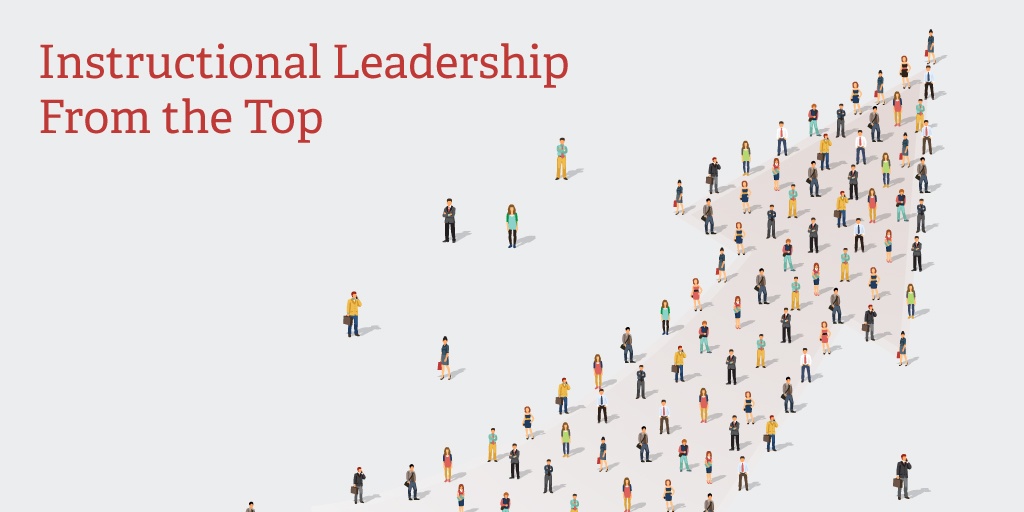
Teaching and learning is the core of what we do in education. As teachers, we know that day in and day out, that is our main charge: student learning. All too often, our day-to-day goals are sidetracked for whatever reason. Some of these reasons are unavoidable, but some come from the driving vision of the district. The support for student learning that flows from the district vision, and is supported by the district-level administrators, helps to keep distractions to a minimum. The people at the top must keep “the main thing the main thing” to keep the focus on learning.
There are many reasons why the leader of a school district needs to be a strong instructional leader. One of these reasons is credibility. Too often, district leaders can seem out of touch with the decisions that occur on the classroom level. In order to have credibility with staff, district leaders must “walk the talk” of good instructional practice—and be able to speak to them and understand them. If leaders are out of touch with instructional decisions, it has a negative impact on learning in the classroom.
The other crucial reason that superintendents must be instructional leaders is to “keep the main thing the main thing," as my superintendent often says. I have found in being a building-level principal that it is easy to “get distracted” by things that aren’t nearly as important as being an instructional leader. These things can suck a lot of time away from the main focus of student learning. Because of this, the person at the top must keep their eye on the ball to make sure there is follow-through all the way down the pike to the classroom level. This was supported by the recommendations from Marzano and Waters in District Leadership That Works. The collaborative goals of a district must be monitored and emphasized for the district to move forward, and this should come from the top.
Focusing on Instruction
In order to make this happen, leaders then need to have personal understanding of what good instruction is. Without a personal understanding or vision for what this should look like, it may be hard to communicate down the line what instructional priorities are. Superintendents who are not passionate about one curriculum versus another fail to help support the mission and vision of learning in a district. Leadership is needed to know what is valued and what is important in a district—and this must come from the superintendent.
So, what does being a good instructional leader look like? Good instructional leadership starts with modeling good instructional practices. All meetings and professional development opportunities should incorporate this. It also means keeping an eye on the ball so progress toward goals is not only monitored, but also celebrated and supported.
One of the common mistakes made by superintendents is to wrap themselves up in the facilities side of the position. In my experience, board members usually know a lot more about facilities management than they do curriculum. Boards will want to focus much more time on this area, which, although important, isn’t the “main thing” for a school. Good facilities are important, but without good teachers and good curriculum, the best built school in the world will not perform well.
Supporting Building-Level Autonomy
I have witnessed all different types of superintendents as a building principal. Some observed every teacher in the district once a year, led book studies, and guided conversations about curriculum and instruction. Other superintendents focused more on legislative issues, community politics, and finances. And other superintendents delegated almost everything, so it was a curriculum director leading the curriculum area rather than the superintendent. There are pros and cons to each of these types of leaders, but my favorites were the ones who knew good instruction and focused on that.
To me, one of the more interesting findings was the correlation between building-level autonomy and student achievement. In District Leadership That Works, Marzano and Waters found that building-level autonomy had a positive correlation of .28, which indicates that “student achievement in a district increases when a superintendent provides more building-level autonomy.” The correlation between student achievement and superintendent tenure is also interesting. “A .19 level suggests that experience and the length of a superintendent’s tenure in a position positively correlates to student achievement.” The superintendents I respected the most understood good instruction, but also helped me to be independent in my support of my teachers. Autonomy is a great thing to have as a principal.
To conclude, the role of the superintendent is complex and difficult, but should always keep a focus on student learning as much as possible. The impact that this has on the teachers and students in the district is multiplied when supported by the person (or people) at the top. It is essential to making student learning the linchpin for all that schools do.
Want to stay inspired by other insightful posts like this one? Subscribe to our Educator blog today and have informative articles delivered directly to your inbox daily, weekly, or monthly!



